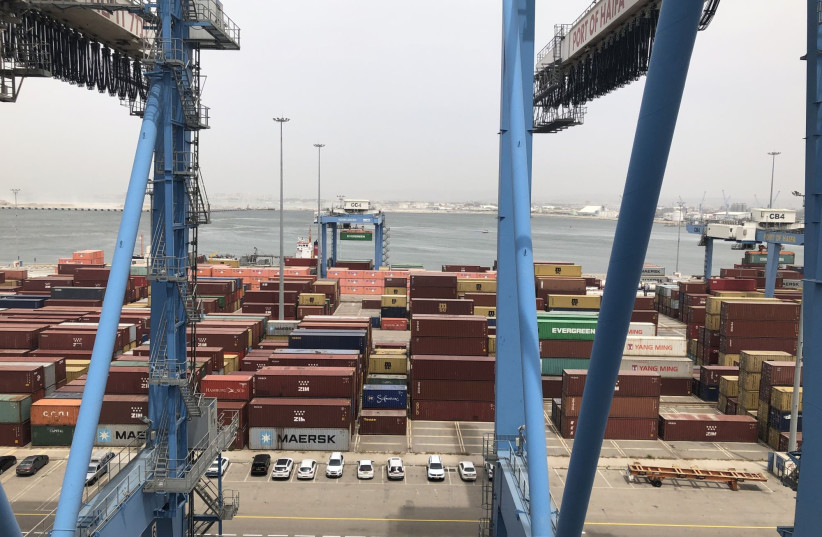Marine species don’t necessarily stay put in the waters in which they were hatched. They often attach themselves to the bottom of ships carrying out global trade, which is increasing every year, and hitch a ride to distant locations, for example from Southeast Asia to Northern Europe.
<br>How was the study conducted?
They are not benign tourists, but invasive species that disrupt the ecological balance, harming both marine infrastructures and displacing local species in their new environment. There are hundreds of species of ascidians – marine invertebrates that attach to hard surfaces such as rocks, breakwaters and ship hulls. These creatures, also called sea squirts, are rounded or cylindrical animals ranging from about 0.5 to 10 centimeters (0.2” to 4”) in size. One end of the body is always firmly fixed to rock, coral or some similar solid surface. The lower surface is pitted or ridged, and in some species has root-like extensions that help the animal grip the surface.
A new study from Tel Aviv University (TAU) on this subject has just been published included a first-of-its-kind experiment simulating the changing environmental conditions encountered en route by marine animals clinging to the bottom of container ships. The study included a unique experiment simulating changing environmental conditions from Asia to Europe.
The study was led by research student Doron Bereza under the supervision of Prof. Noa Shenkar of TAU’s School of Zoology at the George Wise Faculty of Life Sciences and the Steinhardt Museum of Natural History. The paper was published in the prestigious journal Science of the Total Environment under the title “Shipping voyage simulation reveals abiotic barriers to biomarine invasions.”
“The ability of marine animals to survive the arduous journey depends on various factors, including the routes of vessels of different sizes and changing environmental conditions such as the changing temperature and salinity of the water, the type of conveying vessel and the physiological traits of the species itself,” the researchers said. “Extreme conditions at harbors visited by the ship along the route significantly diminish the ultimate survivability of specific species.”

Unique geographic routes for hitchiking creatures
According to the researchers, the routes of vessels are determined mainly by technical limitations of infrastructures at different ports, as well as economic trends in the shipping industry. This results in unique geographic routes that create completely different sets of environmental and other challenges for creatures attaching themselves to these vessels.
But the team cautioned, “The phenomenon of marine animals invading distant regions endangers local marine environments and their resident species. In this study we demonstrate that suitable regulation can decrease this phenomenon and prevent potential invaders from reaching new habitats.”
AT ANY given moment, thousands of marine creatures travel from one location to another by marine vessels, said Shenkar.
“They do this in two different ways – in the ballast water (seawater taken on by the vessel for stabilizing, or by clinging to the ship’s hull. The problem of invasive species transferred by ballast is addressed by legislation, but the ‘hitchhikers’ clinging to the ships are not – and thus numerous species are transferred from place to place along international trade routes.”
The experiment
An experiment conducted by research student Bereza and Shenkar, examined the survivability of two species of ascidians – Chordata and Ascidiacea – known to be harmful, on a journey that follows a typical trade route from Southeast Asia to Northern Europe.
“We focused on two species of ascidians that are common in the Mediterranean, including Israel, and are known to be transferred by ships.”
Doron Bereza
“We focused on two species of ascidians that are common in the Mediterranean, including Israel, and are known to be transferred by ships,” said Bereza. “I created a comprehensive database comprising info from about 200 container ships and used it to build a route representing the trade routes of two different types of container ships – giant vessels over 395 meters in length vs. ‘regular’ container ships that can be served by the infrastructures of more harbors. In addition, I collected data about changes in seawater temperatures and salinity, as well as chlorophyll concentrations, as a measure for the availability of food on the voyage and at the different ports along the way.’
In the second stage of the study, the researchers exposed both species of ascidians to similar conditions in the lab.
What did the study find?
“We discovered that survivability was significantly impacted by several factors: environmental conditions, the type of vessel, and traits of the animal itself,” recalled Bereza.
“Under extreme conditions found in some eastern ports, such as a combination of high temperatures and low salinity, one species died out completely, while no deaths were observed in the other species. In real life, even when routes are generally similar, these ports are not visited by ships over a certain size for lack of suitable infrastructures. Thus, we concluded that docking at ports with different extremes in conditions can significantly diminish the survival chances of specific species clinging to the ships. Additional experiments of this kind, specifically addressing groups of marine animals that pose a threat, can lead to effective regulatory measures for preventing the conveyance of species.”
Shenkar concluded that the team members “were surprised to discover that one tropical ascidian species survived the entire journey to Rotterdam. This does not mean that the creatures enjoyed their trip, but the fact is that they did survive, and just a few individuals are sufficient for launching an invasive population in the new territory. Moreover, global warming is expected to enable tropical species to thrive in water that is still too cold at present. The fact that the environmental conditions in some ports on the way proved deadly to almost all members of a certain species, suggests that such locations may be utilized as environmental barriers to prevent the spreading of invasive species.”
